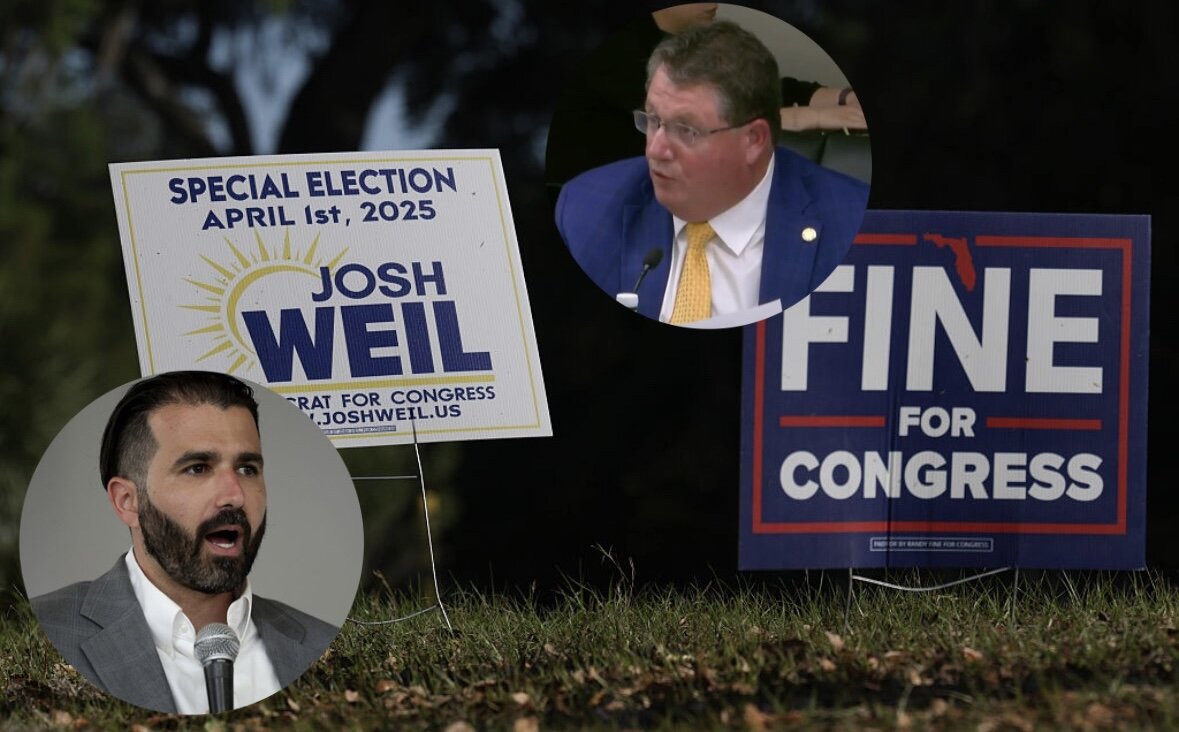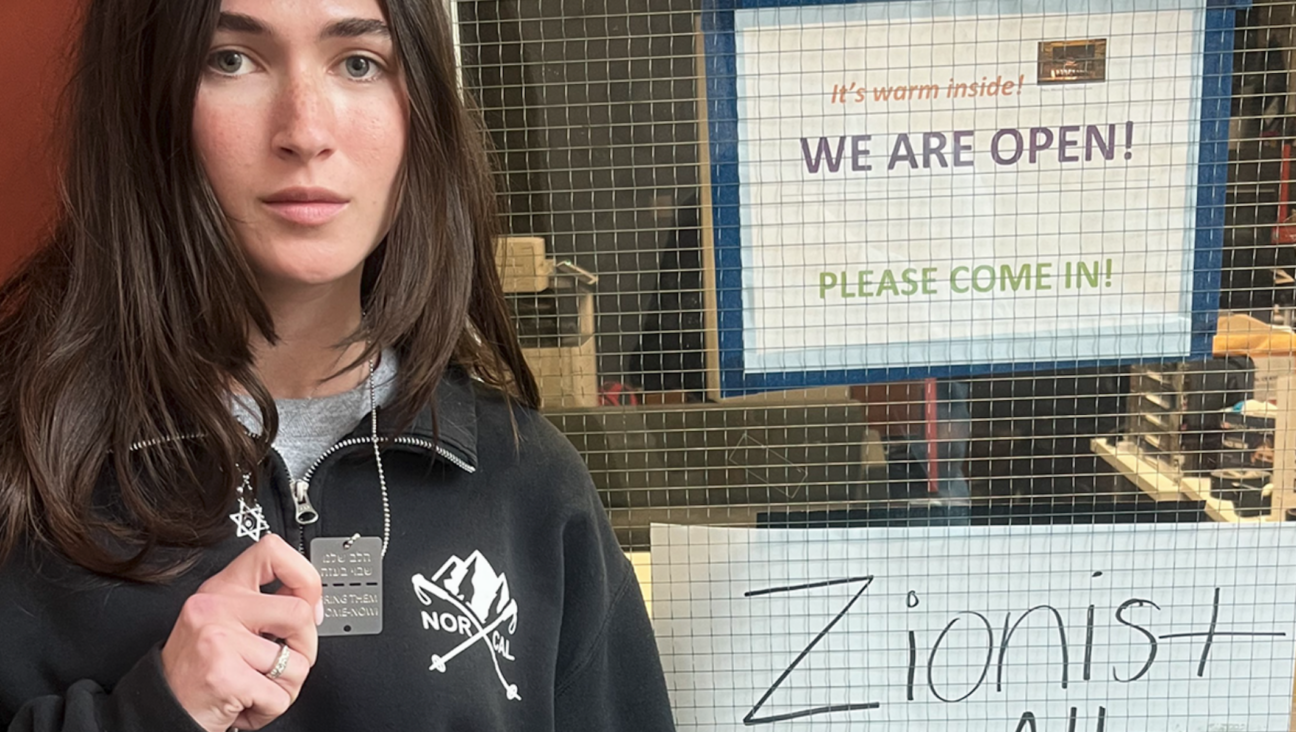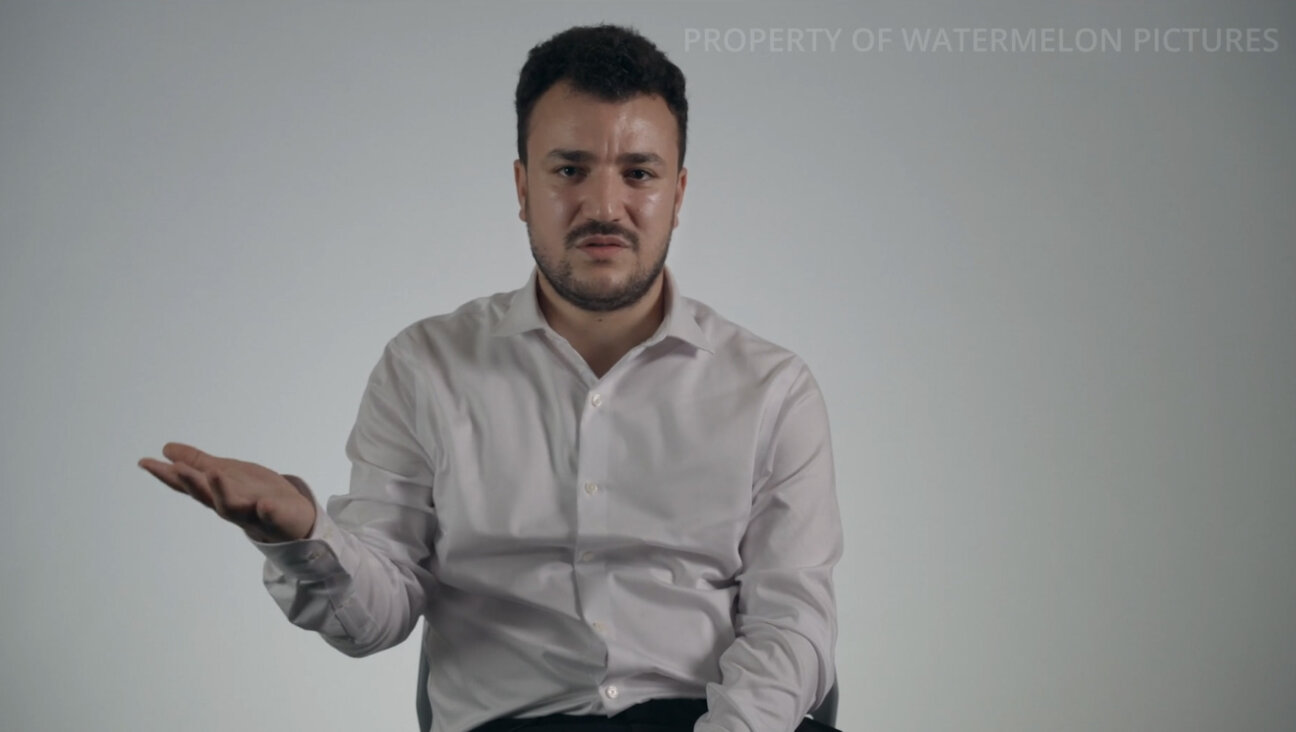Between Two Evenings
From Morton Steinberg comes this query:
Let me begin with a grammatical note for those who know no Hebrew, a language that has an ordinary plural, most often –im for masculine nouns and –ot for feminine ones, and a dual plural, -ayim, for things that occur in pairs. Thus, for instance, the plural of the feminine noun kaf, which means both “spoon” and “hand” or “palm,” is kapot in the former sense and kapayim in the latter, since hands and palms come in twos. However, since Hebrew adjectives have no dual form but only singular and plural, we have Mr. Steinberg’s first question: Which form of the adjective do you use with a dual plural noun like tsohorayim?
The answer is that you always use the plural form so that the contemporary Israeli expression for “good afternoon” is tsohorayim tovim and not tsohorayim tov. Tov would go only with the singular form of tsohar — a word meaning “dazzling light” or “zenith.” Literally, then, tsohorayim means “two dazzling lights” or “two zeniths” — something that has a puzzling relationship to the concept of “noon,” to which we will return.
First, though, let’s move on to Mr. Steinberg’s second question: Why is the hour of dusk called in Hebrew beyn ha-arbayim, “between the two evenings” —- arbayim being the dual form of erev, “evening”?
Since beyn ha-arbayim, like tsohorayim, is an ancient biblical word, this is a question that already occupied Jewish biblical commentators. Rashi, commenting on the verse in Exodus, “They shall slaughter it [the paschal lamb]… beyn ha-arbayim,” explains the expression as referring to the time between “the evening of afternoon” — i.e., late afternoon when the shadows begin to lengthen — and “the evening of night,” or the moments right before total darkness. And yet this seems, I must say, rather forced, especially since Hebrew has yet another, similarly puzzling expression for “dusk” or “twilight,” namely, beyn ha-shemashot, “between the suns.” Is there also, then, an “afternoon sun” and an “evening sun”? What is all this between-ness and duality about?
The only explanation that I can think of might be as far fetched as Rashi’s without having the advantage of his authority, but I’ll offer it for what it’s worth. It starts with the fact that Hebrew has two other dual plural nouns that are unusual because they, too, refer to things that don’t come in pairs: mayim, “water,” and shamayim, “sky.” Moreover, both these words, while having close cognates in Hebrew’s sister Semitic languages, occur in the singular there and in the dual plural only in Hebrew. Is this perhaps because, to the mind of the ancient Hebrew, water and sky, mayim and shamayim, were paired with each other in sound, in nature and by God at the time of Creation? Even more than earth and sky, they are the two halves of a symmetrical whole, the top and bottom of the world, as it were, each reflecting the other, so that, particularly if one is at sea or gazing seaward, they resemble each other and are difficult to tell apart at a distance — from which, looking out toward the horizon, they are easily confused.
Let’s take this a step further. As the sun crosses the sky, it, too, is reflected by water, forming a dazzle on the latter’s surface. Yet at noon, when the sun is directly overhead and all but impossible to look at, it is perceived as a dazzle in the sky, as well, the dazzle below becoming a mirror image of the dazzle above. And as dusk commences and the fiery sphere of the setting sun is reflected as a similar sphere in the water — the space between the two steadily diminishing until they merge on the horizon — water and sky are once again perfect mirror images of each other. Now we see two suns and two evenings, one above and one below.
There are then two times of day when mayim and shamayim, water and sky, are perfectly symmetrical: high noon or tsohorayim, the time of “the two dazzling lights,” and beyn ha-arbayim or beyn ha-shemashot, the time “between the evenings” or “between the suns.” (Of course, there’s dawn, too, but perhaps not enough ancient speakers of Hebrew were awake then.) Although I must admit that this is a rather poetic explanation for what in fact may be a more prosaic linguistic phenomenon, it does make sense of some odd expressions.
Questions for Philologos can be sent to [email protected].
The Forward is free to read, but it isn’t free to produce

I hope you appreciated this article. Before you go, I’d like to ask you to please support the Forward.
At a time when other newsrooms are closing or cutting back, the Forward has removed its paywall and invested additional resources to report on the ground from Israel and around the U.S. on the impact of the war, rising antisemitism and polarized discourse.
Readers like you make it all possible. We’ve started our Passover Fundraising Drive, and we need 1,800 readers like you to step up to support the Forward by April 21. Members of the Forward board are even matching the first 1,000 gifts, up to $70,000.
This is a great time to support independent Jewish journalism, because every dollar goes twice as far.
— Rachel Fishman Feddersen, Publisher and CEO
2X match on all Passover gifts!
Most Popular
- 1

News A Jewish Republican and Muslim Democrat are suddenly in a tight race for a special seat in Congress
- 2

Fast Forward The NCAA men’s Final Four has 3 Jewish coaches
- 3

Fast Forward Cory Booker proclaims, ‘Hineni’ — I am here — 19 hours into anti-Trump Senate speech
- 4

Film & TV What Gal Gadot has said about the Israeli-Palestinian conflict
In Case You Missed It
-

Opinion I co-wrote Biden’s antisemitism strategy. Trump is making the threat worse
-

Fast Forward From ‘October 8’ to ‘The Encampments,’ these new documentaries illuminate the post-Oct. 7 American experience
-

Fast Forward Jews at Tufts are furious over ICE seizing a pro-Palestinian grad student. But they’re wary of joining protests for her.
-

Film & TV How Marlene Dietrich saved me — or maybe my twin sister — and helped inspire me to become a lifelong activist
-
Shop the Forward Store
100% of profits support our journalism
Republish This Story
Please read before republishing
We’re happy to make this story available to republish for free, unless it originated with JTA, Haaretz or another publication (as indicated on the article) and as long as you follow our guidelines.
You must comply with the following:
- Credit the Forward
- Retain our pixel
- Preserve our canonical link in Google search
- Add a noindex tag in Google search
See our full guidelines for more information, and this guide for detail about canonical URLs.
To republish, copy the HTML by clicking on the yellow button to the right; it includes our tracking pixel, all paragraph styles and hyperlinks, the author byline and credit to the Forward. It does not include images; to avoid copyright violations, you must add them manually, following our guidelines. Please email us at [email protected], subject line “republish,” with any questions or to let us know what stories you’re picking up.















